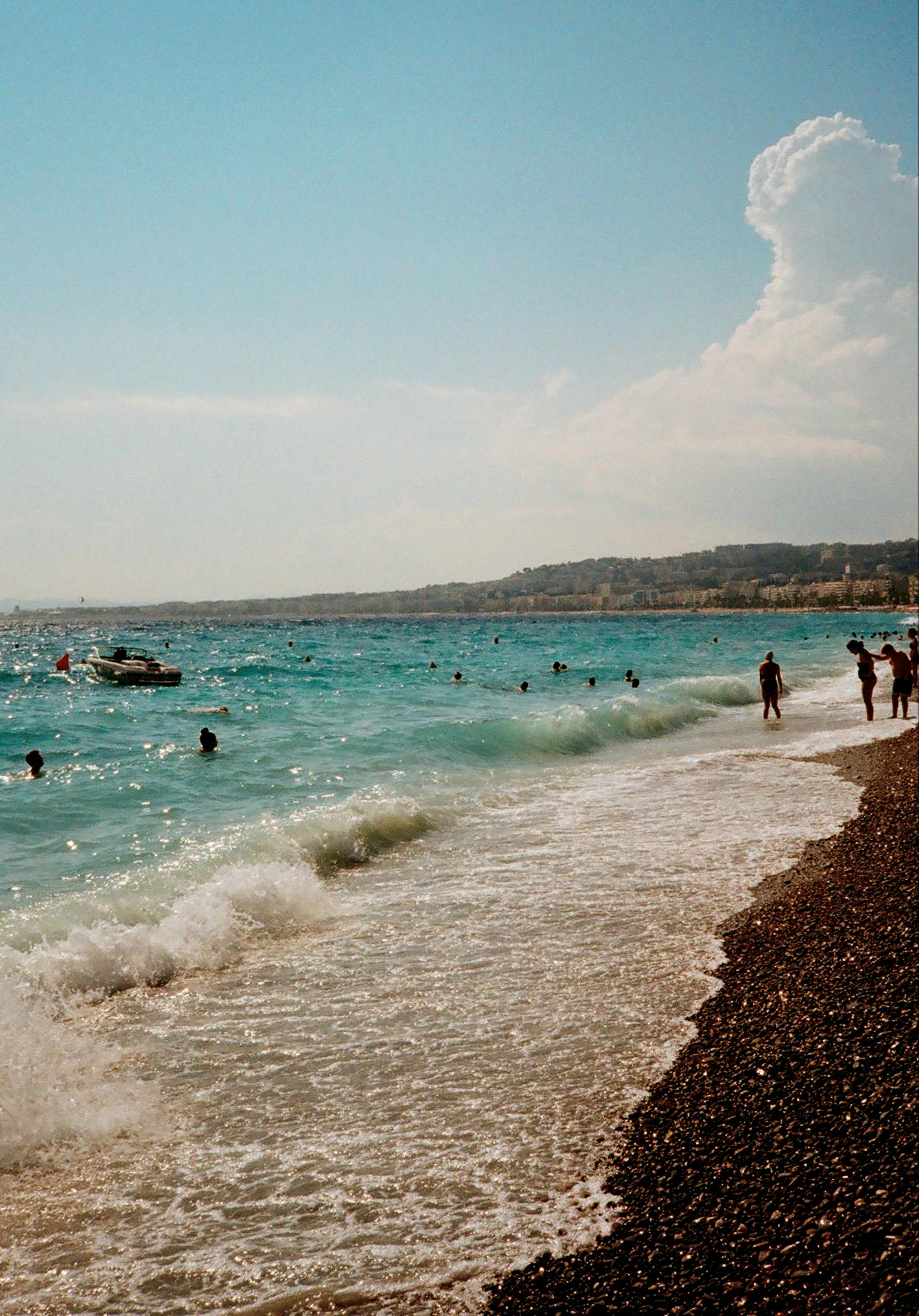
University of Exeter’s Arts, Culture and Lifestyle Magazine


University of Exeter’s Arts, Culture and Lifestyle Magazine
When the time came to select a theme for our third and final edition of the year, we were reflecting as a print team on what this season means to our readers and contributors; summer brings moments of celebration and relaxation, as well as transition and change. As much as we can depend on the constancy of the tide’s ebb and flow, each wave of the ocean brings something new. My hope is that within the Tide edition we celebrate all that has been accomplished this year, as well as all that is still to come.
After listening to your ideas for RAZZ going forward, this edition we are excited to showcase more of our members’ incredible creative work, including more poetry and flash fiction, alongside our usual lifestyle and culture content. Amid our written pieces, this edition is once again full of amazing illustrations, design and photography submissions. A special thank you goes to my co-President, Sophy Cullington; our Deputy Editors, Isabella Wartski and Bethan Oakley; our Copy Editors, Em Hamblin and Maya Fernandes; our Creative Director, Maia McGill; and our Assistant Creative Director, Dharma Austin, without whom these editions would really not be possible.
I am incredibly grateful for my experiences with RAZZ over the past year and throughout my degree, and I hope that as our readers and contributors, RAZZ has also afforded you moments of reflection, recognition and expansion. I can’t wait to see where our new committee takes RAZZ next!
Esther Humphries, Print Editor and Co-President
The sea’s tide offers a regular rhythm; sometimes it’s good to go with the tide, other times it can be a fun challenge to push back. I hope in this year’s last edition of RAZZ, you will find something that might inspire you to think in a different direction.
Isabella Wartski, Deputy Print Editor
The changing of the sea’s tide mirrors the inevitable highs and lows of life. This final edition celebrates the wonderful creativity of our members, and encourages readers to discover new depths. Just as the shifting tide unveils hidden treasures, I hope you find inspiration in these pages that you might have otherwise missed.
Bethan Oakley, Deputy Print Editor
Working on Tide, our final edition of this year, has been a wonderful way to bring designing RAZZ to a close. Exeter’s favourite summer pastime of going to the beach has been our design inspiration, hopefully captured in the pages and articles. It’s been great collaborating with an amazing team, so thank you Dharma, Lucy, Katie and Bethan. Hope you like it!
Maia McGill, Creative Director
Bethan Oakley
Bethan Pepler
Caitlin Taylor
Dharma Austin
Elena Ingram
Emily Mcloughlin
Em Hamblin
Esther Humphries
Esme North
Grace Edwards
Isabella Wartski
Katie Matthews
Lara Iqbal Gilling
Lucy Saul
Maddie Conlan
Maia McGill
Maya Fernandes
Megan Thomas
Nathan Steward
Oliva Roberton
Phoebe Ozanne
Rosie Mitchell
Sophy Cullington
8-9
20-21
RAZZ Publicity Officer Katie Matthews reflects on the impact of Maya Angelou’s poetry on her body positivity and self-image.
When first addressing this article I sat for a while, attempting to name any text from popular culture that evoked a positive body image. I quickly realised that (bar Shrek 2) there are very few examples. Every vain attempt at representation is tokenistic, particularly the use of the “fat” character trope in 2010s films. Growing up consuming so many iterations of the perfect female body, I inadvertently believed my value aligned with my feminine beauty. It began to feel like a peculiar, shameful competition to look “perfect” and feign indifference.
Having watched friends and family members struggle with their bodies and their relationships with food, I
can’t help but feel anger towards the media and how this abundance of perfect bodies can cause harm.
Contrastingly, poetry can softly encourage personal reflection, which – unlike visual mediums – allows the reader to develop their own interpretations and meanings. From my first interaction with Maya Angelou’s poetry, her infectious confidence has instilled in me the same bubbly love for my body. From “Still I Rise,” in which she explains that, like the “certainty of tides,” female resilience prevails, to “Touched by an Angel,” which taught me what love is, Angelou’s flourishing voice has redefined societal expectations of the female body.


Angelou’s “Phenomenal Woman” celebrates the variety of bodies and the importance of self-love, criticising depictions of women as “cute or built to suit a fashion model’s size.” Instead, Angelou defines female value as personal strength, confidence and inner joy, embodied by the adjective “phenomenal.” Angelou writes, “It’s in the click of my heels” and, as she bounces from one line to the next, the feminine jolt of heeled shoes reminds us of the flourishing female grind. She goes on to say:

“It’s in the arch of my back
The sun of my smile
The ride of my breasts
The grace of my style.”
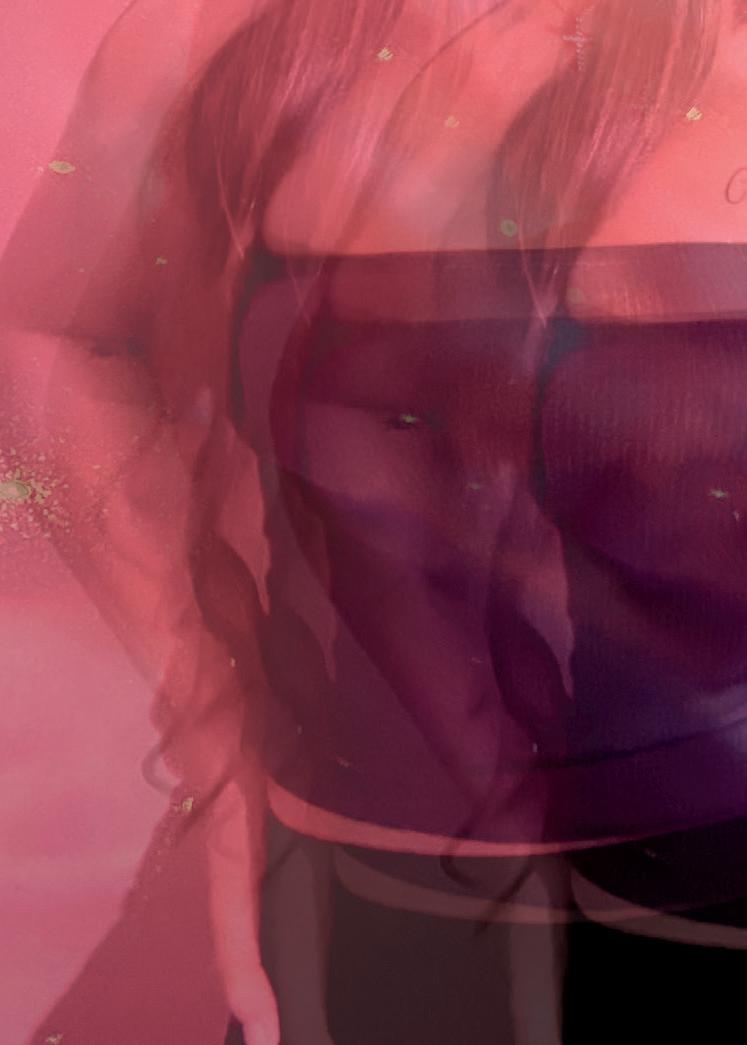

As we grow, our bodies and our relationships with food change. It’s time to give our bodies rest and remember that the confidence that Angelou pours into the world comes from a woman who also struggles. She teaches that there is beauty in every inch of us – the way we move, breathe and explore the world. It’s about embracing femininity with joy and learning to love the imperfections which make us unique.
Here, Angelou perfectly describes how women fight to remain confident in their bodies. When objectification is expected, and judgement feels imminent, learning that beauty comes from how we exude ourselves into the world with such grace and sunny conviction is all any young woman needs to hear. Angelou is that voice.
“... learning that beauty comes from how we exude ourselves into the world...”
“...there is beauty in every inch of us – the way we move, breathe and explore the world.”


So, as summer fast approaches, remember that everybody deserves to frolic about on a beach in a bikini, and nobody should be insecure about the body which lets them do that. Body positivity may not always be present in visual media, but Angelou’s poetry provides a creative environment of self-love, conviction and optimism. Our bodies are supposed to be different; let’s start embracing that.
“Our bodies are supposed to be different; let’s start embracing that.”



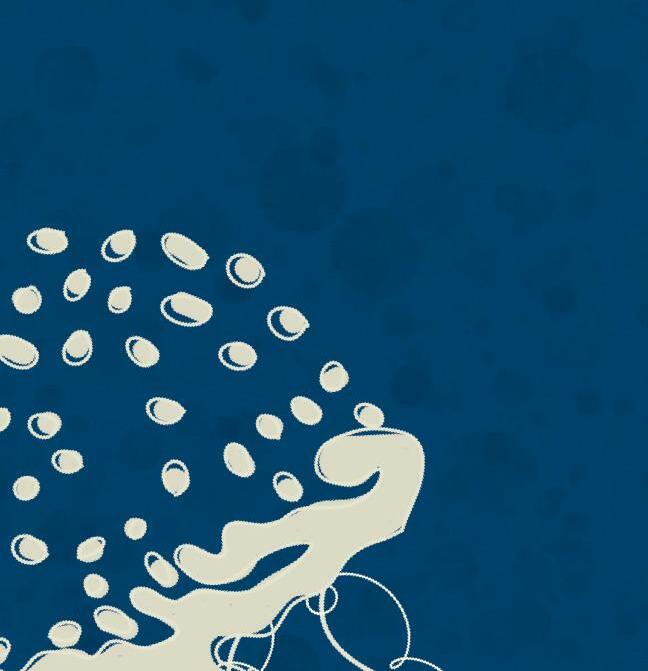
There was nothing quite as calming as the water. The feel of the sand scratching between your toes; the sound of the waves lapping gently at the rocks; the smell of the salt and the sea mixing into a cocktail of memories.


New beginnings had always been hard. Like trying to swim against the tide, like trying to run against the wind. You had shed your skin and changed who you were for so many people, so many times, that you could not remember who you were at your core. Each day was a new role, a new burden. Impaling yourself with fragments of what other people wanted, bending your bones into whatever shape pleased them. One day you were strong, the next they relished seeing you weak. Allowing you to stab your heart into a thousand tiny sections day after day.
No more. Never again.





It was a vow called out across the sand. With only the birds and the fish to hear you, you called out once again, voice stronger than before.
No more. Never again.
The ebb and flow of the water against your toes was calming.





Affirming you in a way that no other living soul could. After years of segmenting yourself, your hopes, and your dreams, you were finally ready. It was like the wind let out a sigh of relief as you decided to embrace everything you could be without fearing all the trials and tribulations that came with becoming you.


It was braver to begin again in the moonlight. It washed over your skin and rather than highlighting your faults, your impurities, it brushed over you like a parental caress. Comforting in the face of silence, interrupted only by the beat of your heart. You could not say what the last straw had been, what had finally broken each careful facade you had placed over your heart, each lie you’d woven, each truth you’d never uttered aloud.









First, you dipped your toes in. The cold shocked you, but at least it kept everything else at bay. At least it stopped any second thoughts. When you had read about this ritual, in an old dusty book in the basement of the library, you had thought the author was insane. Nothing about submerging yourself in the sea on the coldest night of the year seemed fun.
But now… no more. Never again.



Once your calves were submerged you began to feel elated, though it might have been the cold. Then slowly your thighs, your waist, your hands; until only your face was above the water, tilted to the moon.




There was nothing quite as grounding as the water, nothing quite as calming as losing yourself to the waves, washing everything you had held dear away. At least this time you knew that once your head had breached the barrier of the sea, cold and unyielding, you could begin again.
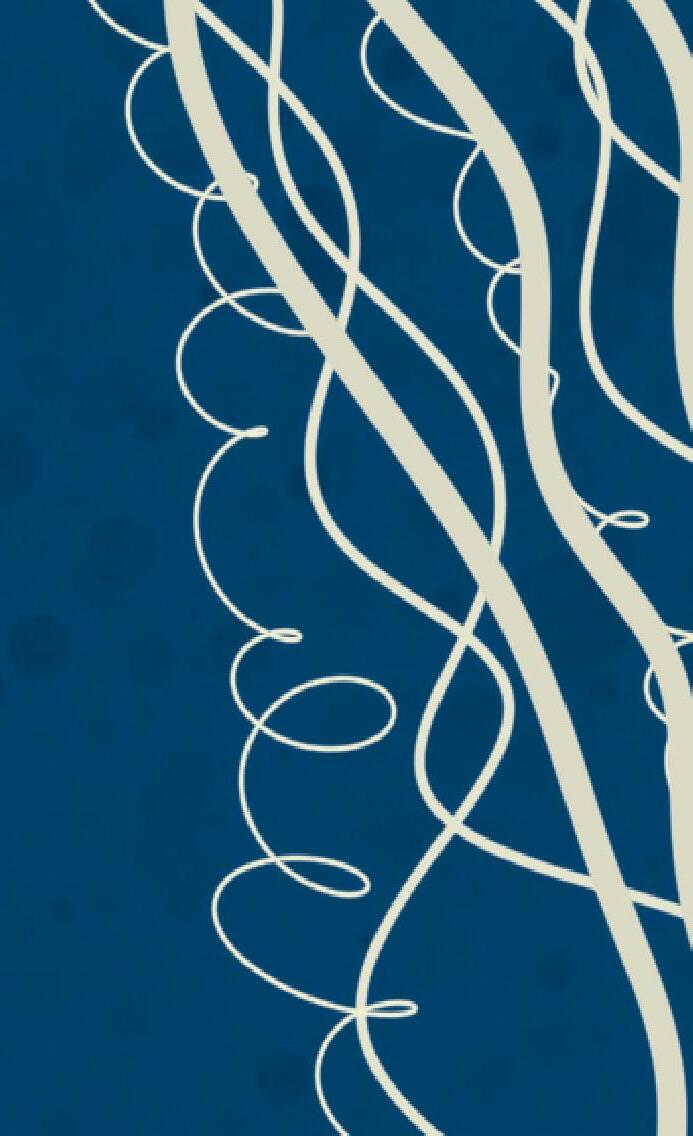

Whole and unbroken and at peace at last. Maddie Conlan


the commercialisation of self-care and how we can take care of ourselves more meaningfully.

In recent years, we have seen an increase in conversations about selfcare and the need to preserve our physical and mental health. As many scramble to take on long hours at work in order to pay their increasing bills and rent, it often feels like we don’t have time for anything else. “Sleep, Eat, Work” seems to be the motto of many at the moment. As a result, we are neglecting ourselves.
Yet, the culture that has developed as a consequence has been highly commercialised, defeating the main agenda of “self-care.” On social media platforms such as Instagram and TikTok, videos of “self-care” are
and physical health.
“When university deadlines are fast approaching and you feel like you’re drowning, it is crucial that you do practise self-care...”
When university deadlines are fast approaching and you feel like you’re drowning, it is crucial that you do practise self-care, even if it looks different to what you see in the media. It may not be easy, but it is critical to take a moment for yourself to be able
to focus on any work or assignments in the best way possible.
This is something I have struggled with for as long as I can remember. Yet, over the years I have noticed how the smallest things can help me feel even a bit lighter than I did before. When I can, I try to get outside and walk away from the city. With woods and walking paths in very close proximity to the city centre, this is one of the simplest and completely free activities I would define as “self-care.” It reminds me of being at home and gives me a place to breathe and listen to music while admiring all the elements of nature around me.
Don’t fret if walking isn’t your thing. Think of the hobbies that bring you joy or things you used to love to do as a child: drawing, painting, baking. Make space for those things again, even if it is not for a huge amount of time. Stretch for 5 minutes. Take a bath, put on that £1 face mask you used to use at sleepovers, and invite a friend over to watch a movie. Start that puzzle that has been collecting dust at the back of the living room, or read a new book.
and the media to capitalise on this necessary need for everyone, and to commercialise it beyond the reach of many. Remember, it is simply the act of taking time to care for yourself.
“It is not for businesses and the media to capitalise on this necessary need for everyone...”

Self-care is going to be different for everyone. It is not for businesses
While self-care itself is not a sham, major businesses and its recent representation in the media have taken away the true meaning behind it. It is simply one of the latest marketing tools. Remember, it is not about how many luxury products you own. It is finding a way to care for yourself when everything else feels like it is crumbling.
Photography by Isabella Wartski

RAZZ Deputy Print Editor Isabella Wartski examines the pioneering work and life of artist Marc Chagall.


I stumbled across Russian-French artist Marc Chagall last summer while visiting Nice for the first time; I was looking up art museums in the area when his name caught my eye. I took my three friends along with me, and we quickly found ourselves immersed in the fantastical and soaring world of Marc Chagall. One particular room in the Marc Chagall National Museum was an intimate concert hall auditorium, with refracted, jewelled colours of light streaming through its radiant stained glass windows that depicted Chagall’s “The Creation of the World,” whilst an orchestra recording played loudly through atmospheric speakers. It was like nothing I had ever experienced before – incredibly moving and surreal. Throughout

his long life, Chagall never stopped pioneering his unique artistic vision of the world against what seemed like some of the most impossible odds.
Chagall lived for almost a century, from 1887-1985, and saw the horrors of both World Wars, amongst many other conflicts spanning the late nineteenth to twentieth centuries. His life played out across the globe, beginning in the Pale of Settlement Region of the Russian Empire and ending in France. He recalled having denied his Jewishness as a child during the pogroms in the Russian Empire, feeling the weight of his difference. Many years later, living in France as an adult, Chagall again felt alienated and struggled to shake his foreigner status despite having become a naturalised citizen in 1937.



Having lived in France for almost forty years and establishing himself as a prominent modern painter at the forefront of the contemporary art scene, Chagall received the commission to paint the ceiling of the Paris Opera in 1963. This decision was met with outrage from much of the Parisian public; to have a Russian-born painter was one offence, and for him to be a modernist painter was another. Chagall went on undeterred though, persisting against the tide of people who sought to exclude him from French society, and when the ceiling was finally unveiled in 1964, all were left speechless. None could deny the magnificence of the ceiling as its colours lit up with a musicality that seemed to echo above and beyond.
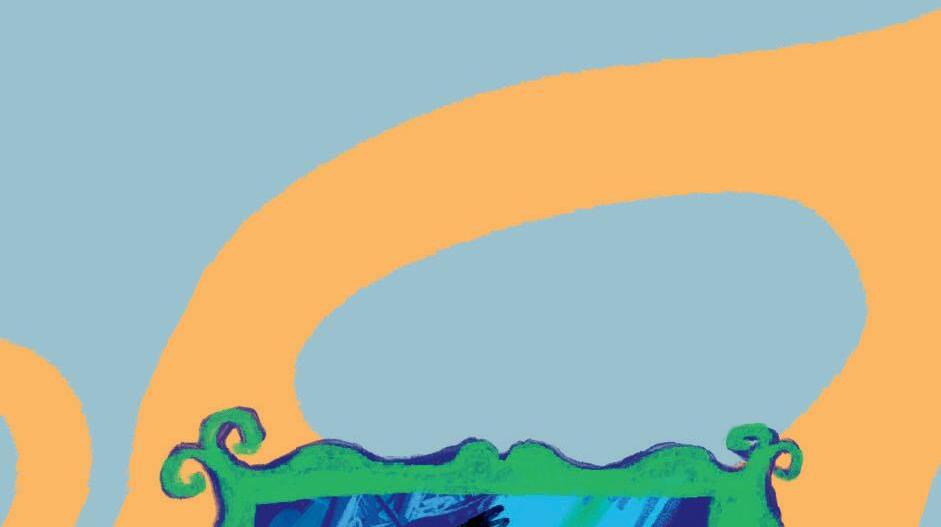


Chagall saw colour on another plane; his rich and varied tones captivated his viewers' imaginations. He expressed his subject matter in vivid, unrestrained feeling rather than through careful linework. While other modernist artists turned from depicting representational subjects, Chagall continued his bold and often surreal figurations set amongst faintly recognisable landscape settings. His Paris Opera ceiling was a poetic homage to the great composers, musicians and dancers that had performed on the stage over the years; their fluidity of movement and creative expression mirrored in the interplay of bright colours and flowing figures, perfectly devoid of any linear narrative.

Illustrations by Lucy Saul, inspired by Marc Chagall’s “The Blue Circus” (1950)


For me, what makes an artist truly great is their defiance and boldness to trust their individual perception and interpretation of what they see around them. Chagall saw the beautiful colours of life and their universally soul-lifting effect to inspire and revive.




You set sail and I shrink above your tide; a waning moon. Across the water, you mouth au revoir “until we meet again”


“Again” promising destiny, reunion yet tainted by “until,” until when? Until these waves grow insatiable or until you become skeletal, dug up all bone and dirt skin turned to fragile paper, the archaeologists will wonder; what left these marks?
I prefer instead à tout à l’heure.
“See you later,” figuratively but literally “at all time at all hours.”
A goodbye in flux, far easier to digest. More immediate in its longing preserving you in memories which ebb and flow, from my mind down my throat.

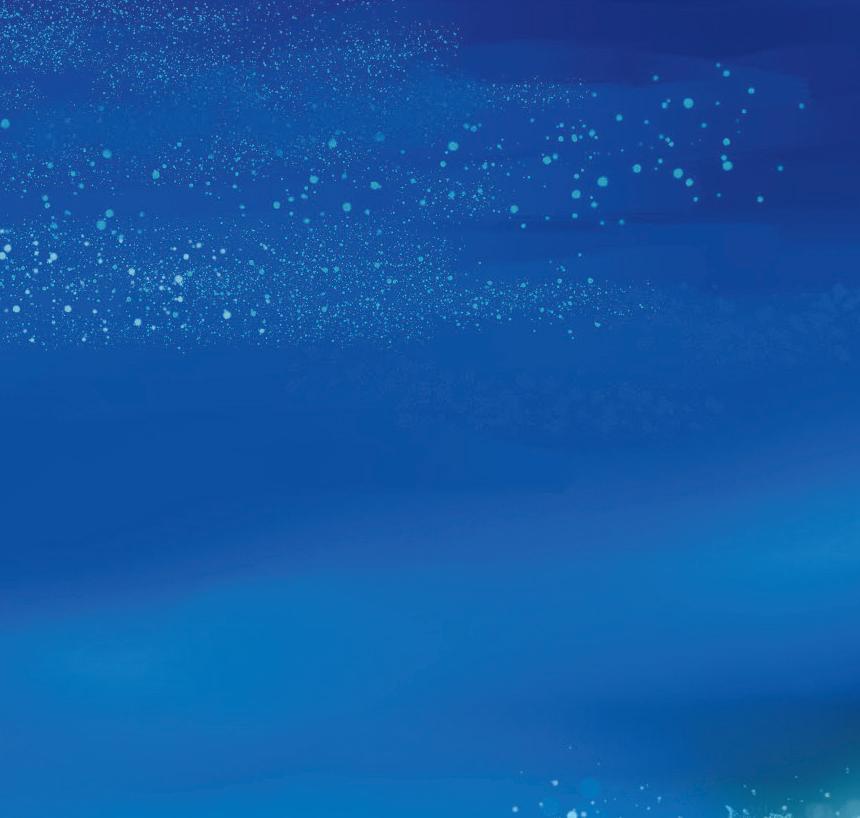

Sophy Cullington, Online Editor
Salt and sulphur tighten my veins and whisper patterns in my ear: The first wave breaks like the sun on the ridges of a fractal sea.
I breathe in and twist my tongue in eddies of broken promises, which lick and crash with the second wave and soak the sand in shadow.
The third and fourth are stories we tell to stay alive –tossed by the moon and kneaded on a breeze –these waves are only ripples, recalled amidst the drag of midnight thoughts.

Revelation rides the fifth –bellowing sorrow through bony porcelain –entrapped inside a shell.
I exhale and dread the before-the-last more than the last, for I crave finality.
Primordial etiquette lists the seventh as the greatest, and most terrible –but like all motions of a beating heart, one must fear the mysteries, and await the eighth.

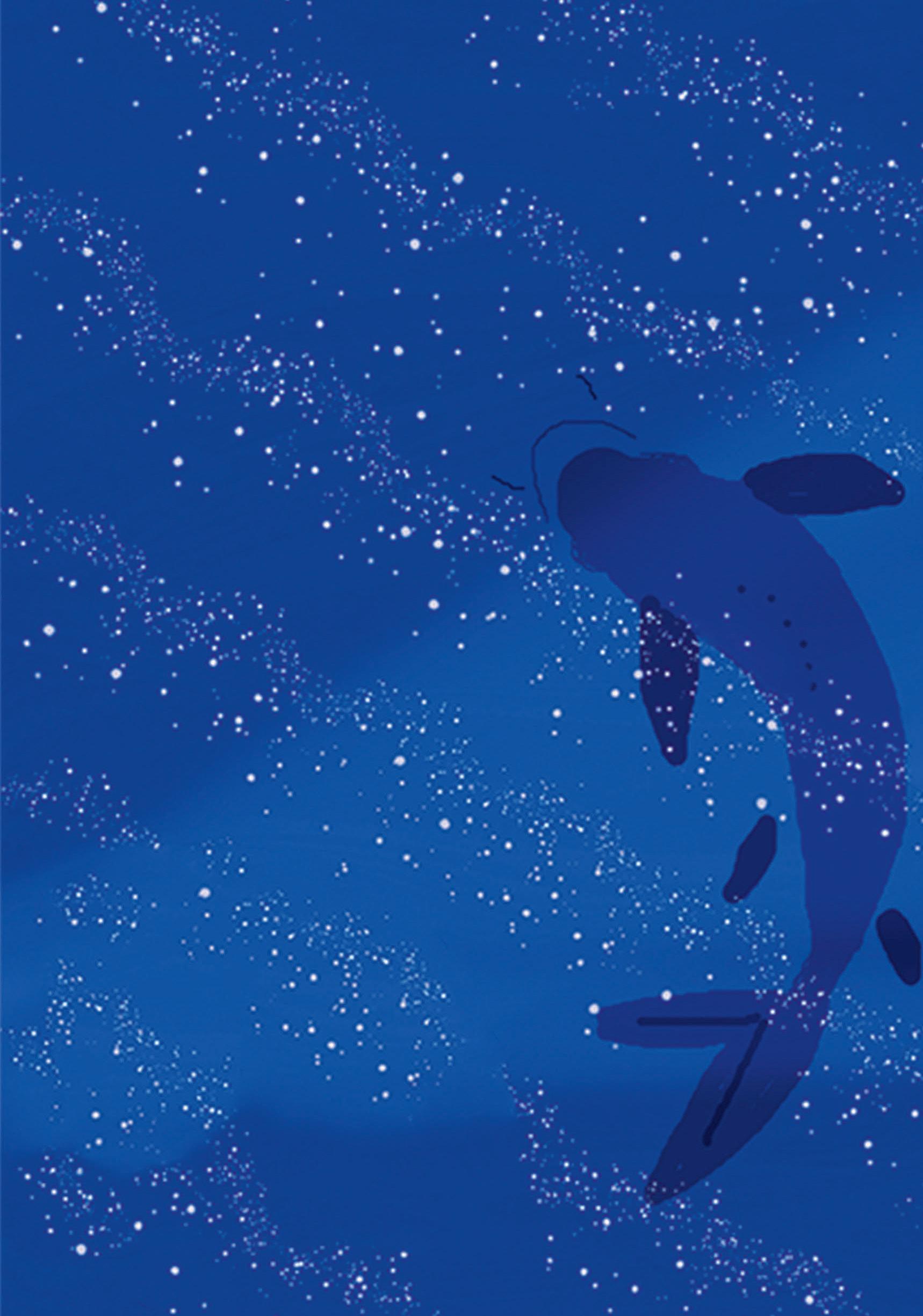
Illustrations by Dharma Austin Nathan Steward

RAZZ Print Editor Esther Humphries reflects on how we can respond to and manage change in moments of transition. Coming to the end of my degree, I have been struck by a feeling of paralysis towards what lies ahead. I find myself in an admittedly privileged position; I am faced with a myriad of opportunities, choices and possibilities as I decide how to face my future postuniversity. But this position is equally unsettling. Starting over with a blank canvas, the choices I make now will surely go on to impact my life in ways that I cannot yet understand.
When I turned twenty-one, I was met with countless friends who were terrified by the prospect of the “twenties” - often lauded as simultaneously the most exciting and most terrifying times of your life. Laughing this off at the time in a Friends-induced idyll, I have since caught a similar case of twenties’ paranoia.
Whether third term brings you to the end of your degree, or you still have a few years left to go, a sense of impending change can pursue university students. The dreaded question haunting final years involves the words “plans” and “next year.” Not knowing what you want to do after graduation is perfectly normal, as is having a focused plan for your career. But, being constantly told to consider our futures can detract from the present.
I am a big planner; organisation can help to calm my overthinking brain. However, if fixating on the future becomes my coping strategy to escape the stress of deadline season or the depths of exam revision, before long, the little time I have left in Exeter will have been wished away.


Planning for the future should not steal away the importance of the moments happening now, small moments that often go on to define our university experiences.
“Planning for the future should not steal away the importance of what’s happening now...”
The changes that come along with transitions from first year to second, and from final year to beyond, are accompanied by associations of freedom, opportunity, and excitement. And yet, these feelings are closely followed, intertwined and infused with the dread of facing adulthood, the fear of the unknown, and the sadness of leaving behind friends. It’s almost impossible, and probably unnecessary, to separate these two opposing sides. Though conflicting, both are equally intense, equally valid.
So, how can we face this change in a way that leaves us feeling prepared for what lies ahead?
I suppose that one of the joys of the “twenties” is that there are no straightforward answers.
“...above all, there is no rush.”
For me, rediscovering the excitement that I felt towards the prospect of my twenties will be a big part of how I face this oncoming change. Though it is inevitably scary, I want to view it as equally fortuitous, as equally exciting. Cultivating this mindset will not be possible without reminding myself that change does not have to be lasting, decisions do not have to be definitive, and, above all, there is no rush. The choices I make now may define my next few months and years, but they will not be determinate. The future may appear a little more approachable if I can just slow down, collect myself and stand my ground.
Whilst we cannot stop the changing of the tide, we can learn to embrace its flow and let ourselves be buoyed by its waves.

RAZZ Copy Editor Maya Fernandes reflects on the album she always finds herself returning to and shares why it should be considered a timeless classic. Looking back through the archives of alternative rock history, few albums loom as large or resonate as deeply as The Smashing Pumpkins’ Mellon Collie and the Infinite Sadness. Released in 1995, this super-sized, 28-track double album encapsulates the essence of ‘90s alternative rock and it is a record that I return to time and time again.
“Encapsulates the essence of ‘90s alternative rock and it is a record that I return to time and time again.”
The band was first established in Chicago in 1988 by vocalist and guitarist Billy Corgan and guitarist James Iha. Amidst the growing recognition of alternative rock in the mainstream, The Smashing Pumpkins had immediate success with their 1991 debut, Gish, and a further breakthrough with their sophomore record, Siamese Dream.
I would argue that what sets Mellon Collie apart from its predecessors is its sonic experimentation and the sheer scope of Corgan’s songwriting.
huge landscape, blending elements of alternative rock, shoegaze, and even orchestral arrangements. The undisputed classic on the album is the single “1979,” a nostalgic comingof-age track which features all of the best qualities of ‘90s alternative music.
“Praised as an ambitious and eclectic record.”
Praised as an ambitious and eclectic record, Mellon Collie and the Infinite Sadness was a worldwide success, topping the charts in numerous countries. Now, nearly three decades later, in an era defined by fleeting trends and disposable pop culture, the record still stands as a timeless work of art that continues to inspire new generations of listeners.
Illustrations by Bethan Oakley ( ( ,
From the dreamy psychedelia of “Porcelina of the Vast Oceans” and anguished catharsis of “Bullet with Butterfly Wings” to the frenetic energy of “Zero,” the album navigates a

RAZZ writer Emily Mcloughlin recommends the beaches to visit this summer for those looking to explore a little further than Exmouth or Dawlish.
With beautiful beaches that mark the gateway to England’s Jurassic coast, Sidmouth takes my number one summer hideaway spot for sand, sea and sun. Sidmouth is home to two separate beaches that are both safe places to swim, are well-maintained and clean, and are excellent places to search for fossils.
The first, Sidmouth Beach, is a familyfriendly beach with lifeguards on duty in the summer. Framed by a beautiful Georgian promenade, the beach extends approximately one mile to Chit Rocks and Jacob’s Ladder. The second, Jacob’s Ladder, is often emptier than the first and is a beautifully vast expanse of rockpools and shingle. If you’re travelling there on a particularly blustery day, this

beach may be better for you, as there is considerable shelter due to the sheer cliffs around it.
The journey from Exeter to Sidmouth by car is around 40 minutes, but as someone without a car, one of my favourite things about Sidmouth is how simple the journey is by bus. The bus journey from Exeter city centre to Sidmouth is just under an hour and comes to an £8 total for a return ticket or £9.50 for a day ride.
Barbeques are also allowed on the Sidmouth beaches, as long as they are suitably maintained and disposed of. So, with the bonuses of a donkey sanctuary, a museum and the beautiful Connaught Gardens, what more could you want from an escape to the seaside this summer?











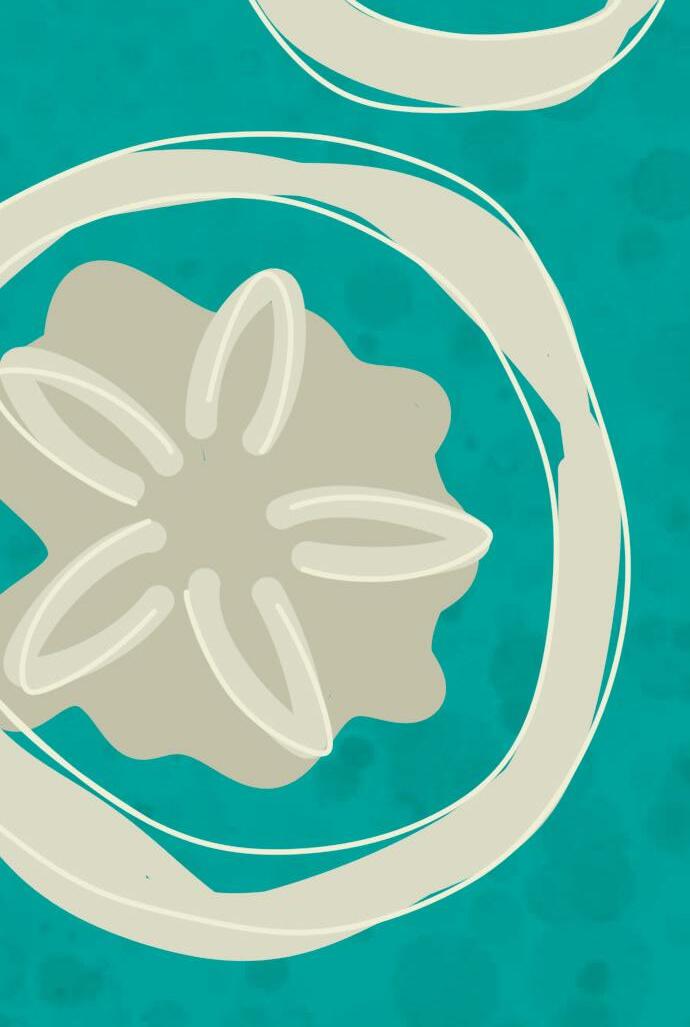








Lying atop the sand on a bright pink lilo, it is hard not to fall gently - carelessly - to sleep. Feeling the sun blaze your skin, a harsh blast like an overzealous hairdryer, the waves crash and pull nearby, sound and feeling melting into a smear which glows bright amber.





“She’s just the worst,” a friend says, leaning up against her towel. “Like, how hard is it to text someone back on time? She knows it drives me insane, she’s like a sadist or something.”




Speaking over the pink lilo, the other friend props herself up in reply; “Your fault for falling in love, I guess. Why are you even looking at your phone on the beach? Lie back, let the sun burn out your retinas,” she smiles, a flash of light. “This is the life.”





The pink lilo is growing unbearably hot, the plastic moulding itself around you like a second skin. The air seems to vibrate around you, hotter and hotter, a thrum which feels like anticipation.


“Yeah.”


“Whatever, I’m getting a drink. You brought vodka, right?”


“Vodka slushies it is. You guys want one?”





The heat presses in as the girls listen to the shaking of the air, the ripple of wind through hair. Listen closely and you can hear the ground moving, unsettling, the gentle upheaving of the ground below your feet. Feel the sand rush around you, away, as an absence. It cannot touch you, not even close. The pink lilo keeps you up, above. Plastic buoyancy, a castle against siege.









Back again, three slushies forming a pyramid between hands pressing together. You hear the sound of liquid pouring between ice, the gentle crackle of chemical reactions, the swirling of the straw making the dull noise of knuckles popping.

You do not move from the lilo, as you see the colours mix. Blue bleeds into red like arteries exposed to air, bleeding into the purple of a bruise. Your eyes ache, the sun pelts.
You feel a pulse that aches in your head, thumping steadily. You look at the slushie placed by your head, gloriously bright, an impossible colour.
Your friends drink around you, gripping ice between hands so warm they brand like iron. You curl your fingers into the cup, scooping out fingerfuls of ice. Place it into your mouth, and crunch it as your head bounces back against the plastic, a little jump of resistance as your eyes close.
The world moves, always, but you feel it most in the rocking of the sea. A bright pink lilo floating against the tide, roving into the brightest blue.
A gentle movement, like a mechanised belt, moves you over the waves, salt seeping into your skin. You hear buzzing, heat, words, but the sea takes you further in.
Voyage on the seas, against them. Let the air within buoy you away and on. Heat makes everything a dream, in bursts of dizzying brightness.
Elena Ingram



RAZZ writer Grace Edwards curates the perfect playlist to help you navigate the change and excitement of the summer term.
Some of these songs are gentle, like the calming ebb and flow of the tide, and others are like crashing waves, best listened to loudly, whilst dancing, to remind you of better times ahead. Term three can also be as mixed – assessments and exams, the looming feeling of change but also longer days, brighter weather and time for summer adventures. This playlist is book-ended by Take That, my “tidal” band, who have been with me my entire life in some form or another. I hope this playlist (and what it means to me) helps you get through this time of year.

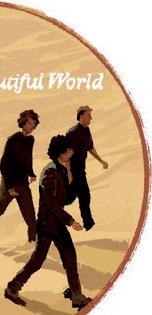
Wooden Boat,” Take That
“Sometimes we don’t know what we’re waiting for / That’s the time to be the first one on the dance floor”
• To remind me to enjoy the present moment.
Souvenir,, Orchestral Manoeuvres in the Dark
“My feelings still remain”

“Detectorists,” Johnny Flynn
“Where a love lost at sea / Is waiting for you”
To remind me (as an archaeology student) why I love what I study and why I love summer.
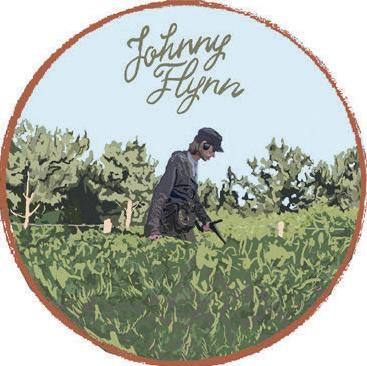

• To remind me to take time for myself and the things that make me who I am.
“Clean Taylor’s Version Taylor Swift
“Rain came pouring down / When I was drowning, that’s when I could finally breathe”
To remind me that pain will pass.



“Chiquitita, you and I cry / But the sun is still in the sky and shining above you”
• To remind me that this is only one moment, and to look forward to summer adventures.

“I fear I’m on an island in an ocean full of change / Can’t bring myself to dive in to an ocean full of change”

• To remind me to be grateful for the people I have around me.

“It may not seem like much / But it’s everything to us”
• To remind me to celebrate everything I’ve already done.

“Changing(ft. Paloma Faith,, Sigma
“If everything is Changing / Then I know, yeah gotta let // Go”

• To remind me that change (whether graduating or going into your next year of study) is inevitable and to embrace it.
in red
“So unfazed by the world and it screams / And it screams, and I scream!”
• To remind me to keep doing what I want to do, and to do it boldly.
“When new waves come and tides move on

/ Every day you’ll ever know / Is followed by a brand new sun”
• To remind me that every day is new, and each of those days I will have music.
Illustrations by Katie Matthews
RAZZ writer Caitlin Taylor shares her advice for tackling the major task that is moving out.
We are heading towards the end of term three, which can mean only one thing: the dreaded end-of-year moveout. Oh, yes. It’s that time when the IKEA bags come back out from under the bed and the storage boxes are rammed with the possessions you’ve collected during the academic year (mainly Dominos vouchers and TP cups). This move can be stressful for all those involved; you want to make sure that you leave nothing behind, whilst also saying farewell to the room you’ve lived in for the past year. Although this moment of transition and change can be sad for many, it is a nice time to reflect on the year you’ve had. So, here are some tips on how to move out with ease:
Remember all of those boxes you kept from when you first moved in? Hopefully you DID NOT throw them away! And make sure you collect any new boxes from now on (whether
that be from Hello Fresh or another delivery). They will be essential for moving out.
At uni, the kitchen is a territorial place. Whatever is yours, make it known that it belongs to you. Don’t let anyone take away your mould-free mugs, your cutlery or, most importantly, your airfryer. Make sure no man is left behind - especially the machine that has provided you with chicken nugget cuisine for the past year.
Over the course of the year, you may have accumulated a tower of cups in the corner of your room, stained with pre-loved Venoms from your nights dancing in TP. Be sure to take these home with you for the memories or, be charitable and give them back to TP. Besides, that return deposit could get you some free Venoms.
Two RAZZ writers reflect on the seemingly small choices that have gone on to have a big impact on their lives.
Ten-year-old me wouldn’t have considered almost quitting tennis as one of life’s “turning points.” I’m grateful that, as a child, my parents threw me into various activities like ballet, swimming and playing an instrument. My involvement trickled off upon entering secondary school. Despite my protests, echoing other girls who fell out of love with sports at this age, tennis seemed to be the only real contender. My parents played, and mum would say, “I’m taking your brother anyway, so you can either sit and wait, or play yourself.” Sticking at it and entering university as a tennis player allowed me to be part of something. I now love tennis and the opportunities, memories and friendships it’s given me, particularly at university. Sometimes, parents do know best.
Bethan Oakley, Deputy Print Editor
I was initially under the misguided impression that studying psychology was my life-calling. My favourite subject at school, it logically progressed that I should pursue psychology at university. Seventeenyear-old me didn't realise the copious amount of statistical content university-level psychology includes. I’m sure the universities I applied to were appalled at my transcript, listing a compelling 4 in mathematics. I was only four marks below the higher grade boundary. Bristol University, my first choice, rejected me; they liked my application but specified that without a 5 in mathematics, they couldn’t consider me for a place. With just four more measly marks, I might have been in a different city with different friends (and probably hating my degree), instead of happily studying art history and English at Exeter.
Roberton



As the waves ebb and flow, The rocks lay their tired bodies against a home they know. They crawl back to shore, barely able to stand To rest again on the cool, wet and inviting sand.
Before the water retakes them by their hand, Snatches them without a sound. Until it crashes them together like church bells, Their bodies mashed with lone sea shells.


TNature doesn’t share their plight. It doesn’t matter how hard they fight. It has to be strong and stay with its kin. Take every dent upon the chin.
But when the tide rolls in towards the shore, Those who have survived the war, Who bit and kicked and screamed and clawed. They return to the sand a new man. A person with a solid plan. With edges smooth and perseverance grown, A newfound comfort, safe at home.
I D E

Megan Thomas, LGBTQ+ Officer
Illustrations by Dharma Austin

Curling into summer’s warm body, I feel her rising chest
Under twitching net curtains, I sink into her heavy bed
Sly eyes of amber oil illuminated from within
Tongue darting over bitten lips, she casts me a candle-flicker grin
In town the air is full of breathless shouts, sweaty shoulders slide past mine I squeeze my hot heart in my hand and leave my lungs behind
Faces are lit up by strobe – flashes of purple then white
Throats are tight, arms are limp, manhole pupils swallow the light
Gasping mouths tumble outdoors, where fresh colours bloom overhead
The sea laps at the crumbled shore below a lava lamp sky of pink and red
Wrung out like towels, we walk our wrinkled bodies home
Throbbing feet lead the way, heads sway over the flagstones
In the yellow morning, we’re splayed out on the bed
Tangled in warm limbs, we form a drowsy vignette
I withdraw myself slowly, tiptoe on cool tiles
The tidal night has ended now, I won’t see her again for a while

Lara Iqbal Gilling,


DORSET


